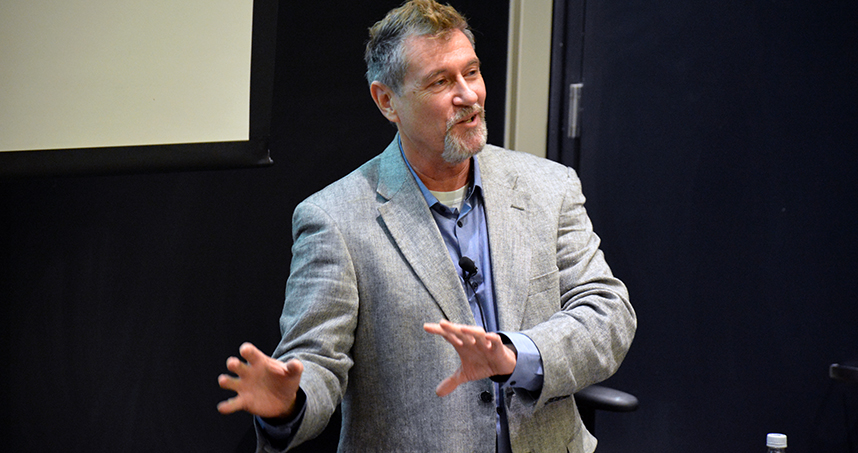Science Editor Discusses Publishing Dos and Don’ts
Phillip Szuromi visited campus on Thursday, November 10
When Science magazine’s senior editor Phillip Szuromi is about to publish a journal article, he often replaces its first paragraph with the introduction in the author’s cover letter. In journal papers, authors tend to write as though they are talking to other experts in their field, which is not always the case with Science’s readership.
“People tend to write more colloquially in their cover letters,” Szuromi said. “They clearly state why the work is important and why they are doing it.”
Hosted by Northwestern’s Simpson Querrey Institute (SQI) for BioNanotechnology, Szuromi spoke to a packed room on Thursday, November 10 about “Scientific Publishing from the Inside Out.” In addition to addressing the importance of clear writing for a more general audience, Szuromi discussed the history of Science, how the magazine selects articles, how publishing has changed in the Internet age, and what components make up a successful, publishable journal article.
“Phil is one of the best editors in science,” said Samuel I. Stupp, SQI director and the Board of Trustees Professor of Materials Science and Engineering, Chemistry, Medicine, and Biomedical Engineering. “And many people in the community share that view.”
Due to massive amounts of data now available for research, journal articles are getting longer and longer. Fortunately, Szuromi said, online publishing has been able to accommodate these increasing lengths while allowing the print edition to publish shorter summaries.
“There is a huge legacy effect from print to online,” Szuromi said. “Online still borrows very heavily from the print model. But the Internet allows for more data and more transparency.”
Published by the American Association for the Advancement of Science, Science is one of the world’s most selective peer-reviewed journals, accepting just 7 percent of submitted articles. Szuromi offered some advice to authors who hope to someday be included in that small percentage.
What editors like:
- High-quality research
- Hot topics
- Novel ideas
- New general methodologies
- Research with societal impact
- Research that has potential to spur more studies
- When the research’s novel elements are clearly stated
What editors do not like:
- Lack of clear metrics
- Research that only impacts a small audience
- Papers with undisclosed companion pieces that are submitted to other journals
- A rejected paper that is resubmitted with only minor changes
Before submitting a paper, Szuromi recommends sharing the draft with peers for feedback and to ensure clarity. Even just one mistake could turn off an editor.
“It’s like a game of ‘Chutes and Ladders,’” he said. “If there is a hole in the work that needs to be filled — no matter how hard the authors have worked on everything else — reviewers will be prejudiced toward that paper.”
